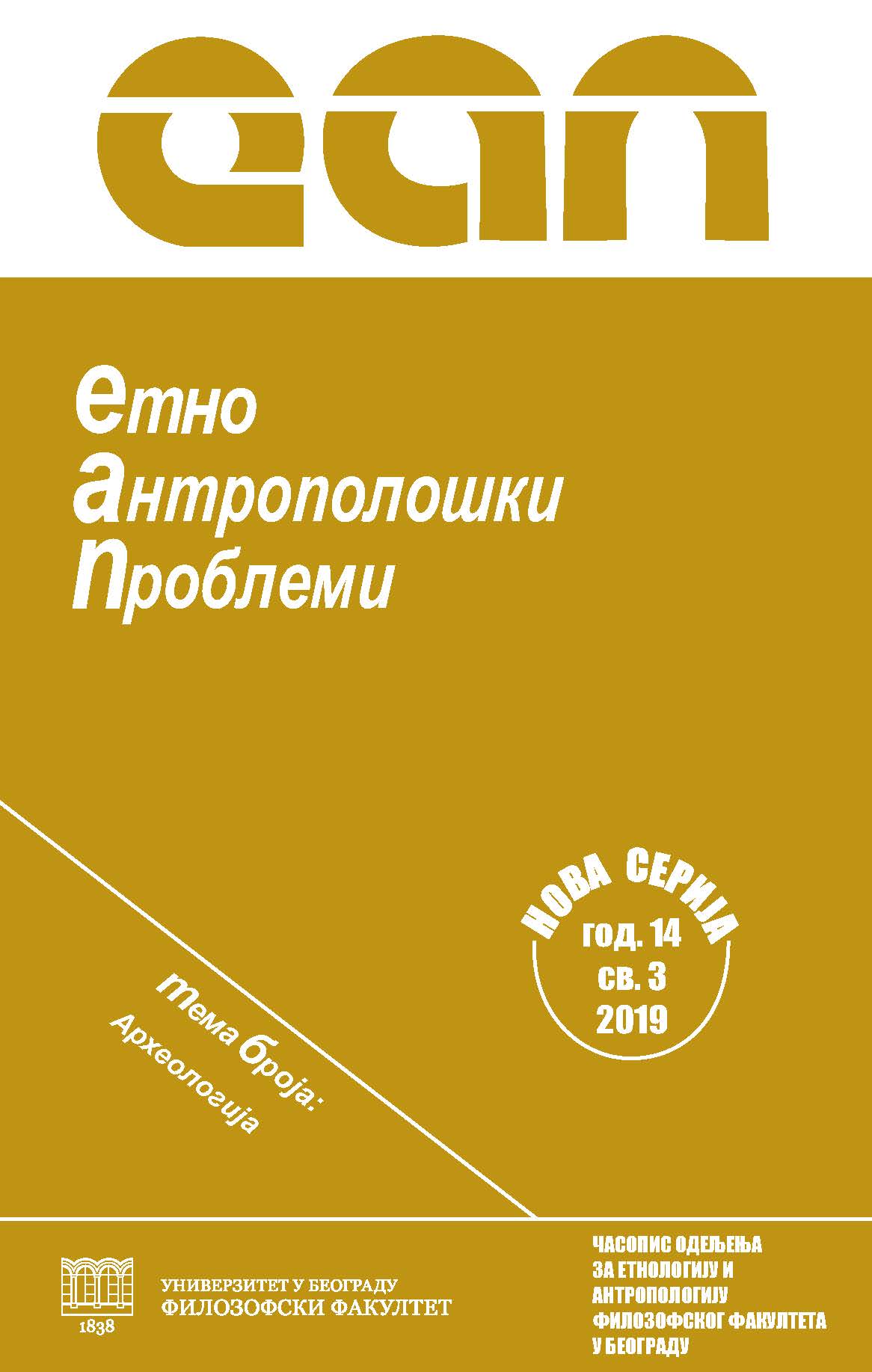Teren i javna arheologija (ili zašto je potrebno preispitivati i naizgled jasne veze?)
Fieldwork and Public Archaeology (or: Why Even the Seemingly Clear Connections Should Be Examined?)
Author(s): Tatjana CvjetićaninSubject(s): Archaeology
Published by: Филозофски факултет, Универзитет у Београду
Keywords: public archaeology; archaeological fieldwork; professional authority; narratives of the past; Serbia
Summary/Abstract: Public archaeology and community archaeology are some of the terms denoting various ways in which archaeologists, convinced that archaeology should not act in isolation, reach out to the public or include it into disciplinary practices. The public is principally educated and enabled to embrace the social relevance of archaeology.Archaeologists are primarily visible in the public as the ones excavating and discovering the past. When we inform the public, educate or include it in our activities, work with or for the public – or when the public is dealing with archaeology on its own – archaeological fieldwork is not only the most recognizable and the most popular image of archaeology, but also undoubtedly the basic area of our activities. In Serbia, the field excavations are perceived as almost the only way of approaching the past, and the field directors, participants in excavations and interpreters of fieldwork are recognized as reliable (and often the only) public faces of the discipline. Authority is generated through discovery, and visibility is the result of popularisation. Public archaeology is mainly understood as public relations, or even as media relations. Collective anxiety, neoliberalism, and the political populism of the moment, all result in the trend of increase in discourse of memory and musealization of society. This contemporary politics of memory is an answer to the current space and time, with accelerated changes and endangered traditional values. Additionally, the new political reality from the 1990s on has dissolved the symbolic capital of the supra-nation, so the establishment of a new collective memory and cultural identity became necessary. The narrative of the “(celestial) people with history” is chosen, on the soil with a special spiritual axis, and the celebration of the unique homogenous nation is embraced. The construction of the new identity is helped by the disciplines dealing with the past, and various institutions –including the archaeological ones – go a step further in “imprinting upon heart and soul” the new cultural/political memory. This step further demonstrates that they recognize the public only in the structures of power. The institutional and ethic crisis is apparent: even in the places where the professional community (including conservators, custodians, academic community, as well as archaeologists) emphatically opposes excavations, they will be conducted nevertheless. More often than not, the sensational, unique or luxurious is emphasized, mainly to secure the social, political and financial support for projects, as well as prestige. The authorized narratives of the past and the pre-packaged heritage corrupt the image of archaeology and contribute to the misconception of the past. The paper treats both the examples of good and bad practice, with the intention to demonstrate that the need to promote must be supplemented by responsibility, and the public archaeology in Serbia broadened by new aims.
Journal: Етноантрополошки проблеми
- Issue Year: 14/2019
- Issue No: 3
- Page Range: 789-809
- Page Count: 21
- Language: Serbian

